| کد مقاله | کد نشریه | سال انتشار | مقاله انگلیسی | نسخه تمام متن |
|---|---|---|---|---|
| 2011814 | 1067016 | 2012 | 13 صفحه PDF | دانلود رایگان |

Background1-Methyl-1,2,3,4-tetrahydroisoquinoline (1-MeTIQ) is present in human and mammalian brain as aracemate (R,S) of two stereoisomers: R- and S-1MeTIQ. The racemate is a mixture of the endogenous, synthesized in the brain dextrorotary R-1MeTIQ, and the exogenous, levorotary form, S-1MeTIQ.MethodsIn this study, we compared the effect of these two stereoisomers of 1MeTIQ with the racemate in the context of their influence on dopamine metabolism and in vivo dopamine release in the rat striatum. Additionally, a behavioral study was used to examine the influence of both enantiomers R- and S-1MeTIQ on locomotor activity of rats.ResultsThe behavioral studies showed that both R- and S-1MeTIQ enantiomers, like the racemate, produced biphasic effects: a slight decrease in the exploratory locomotor activity, and then an increase in the basal locomotor activity. Biochemical ex vivo experiments showed that S-1MeTIQ produced a much stronger inhibition of MAO-dependent dopamine oxidation than the racemate. R-1MeTIQ, in opposite to S-isoform and racemate, did not block dopamine oxidation in the structures which contain dopamine nerve endings (striatum, nucleus accumbens), and in fact did not suppress the level of its intraneuronal metabolite, DOPAC in these brain regions. However, an in vivo microdialysis study demonstrated that the racemate and both stereoisomers (R-1MeTIQ to a lesser extent) significantly elevated the concentration of dopamine in the extraneuronal space in the rat striatum. What is more, the concentration of an extraneuronal dopamine metabolite 3-methoxytyramine (3-MT), which is an indicator of its release, was considerably increased by all the compounds.ConclusionsIn summary of the results, it can be stated that S-1MeTIQ, like the racemate and in contrast to R-stereoisomer, inhibits MAO-dependent dopamine oxidation in all investigated brain structures. In addition, both these substances potentiated COMT-dependent O-methylation in the brain, however, also R-1MeTIQ produced such effect but to a lesser extent. In conclusion, we suggest that R- and S-1MeTIQ enantiomers like the racemate may demonstrate neuroprotective properties in the brain via the activation of dopamine O-methylation catabolic pathway and elevation of its methylated product – 3-MT.
Journal: Pharmacological Reports - Volume 64, Issue 4, July–August 2012, Pages 857–869